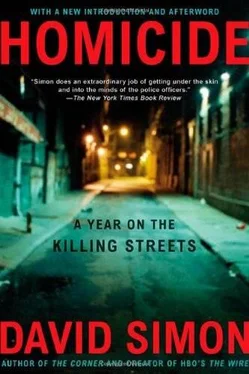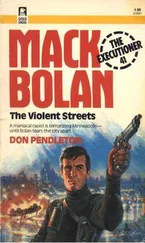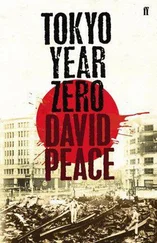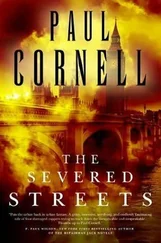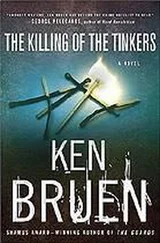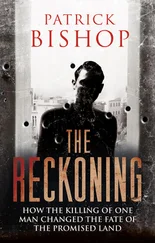Instead, he got the paint chip. He and Landsman had discovered it yesterday afternoon after the little girl’s clothes had gone to the trace lab for another examination. Van Gelder from the lab was with them and, in fact, it was he who first noticed the colored flake clinging to the inside of the yellow tights.
It seemed to be a semigloss paint in separate coats, with the red layered over the orange. A single color would have been harder to track, but how many objects in Reservoir Hill had been painted orange and then red? And what was the paint chip doing inside the dead girl’s hose? And how the hell had they failed to notice it the first couple of times around?
Even as Pellegrini was elated to have a new piece of evidence, he was angry that it had not been discovered at the outset. Van Gelder offered no explanation, nor did Pellegrini want one. The Latonya Wallace murder was the year’s most important investigation; how could the trace analysis have been anything but flawless?
Now, standing in the rear of Newington Avenue, Pellegrini’s frustration is complete. Because from every outward indication the paint chip leads nowhere near the Fish Man-and it is toward the Fish Man that Pellegrini wants to go. It is the Fish Man who failed the polygraph, it is the Fish Man who knew Latonya and had paid her to work in his store, and it is the Fish Man who never managed any kind of alibi for the night of the child’s disappearance. The Fish Man: Who else could the killer be?
For months, Pellegrini had spent every available moment delving into the old store owner’s life, preparing himself for one last confrontation with his best suspect. In a way that was almost amusing, the Fish Man had long ago become inured to the pursuit. At every corner of his life, there stood an obsessed police detective-learning, gathering, waiting. In every crevice of the man’s quiet little existence, there hovered Tom Pellegrini, rooting around for information.
They knew each other now. Pellegrini knew more about the Fish Man than he cared to remember, more about this wretched old guy than anyone outside his family. The Fish Man knew his pursuer by name; he knew Pellegrini’s voice and manner, knew the ways in which the detective began a conversation or framed a question. Most of all, he knew-he had to know-exactly what Pellegrini was after.
Any other man would have raised some hell. Any other man would have called a lawyer who would have called the police department with a harassment complaint. Any other man, Pellegrini reasoned, would have eventually looked him in the eye and delivered the expected message: You and that badge can go fuck yourselves if you think I kill little girls. But none of that had ever happened.
Since that second interrogation at the homicide office, the two men had gone through a series of strange conversations, each more amiable than the last, each predicated on the Fish Man’s initial assertion that he knew nothing about the murder. Pellegrini ended each discussion by reminding the store owner that the investigation was continuing and that detectives would probably need to speak with him again. Without fail, the Fish Man would assure him of continued cooperation. Earlier this month, Pellegrini had broached the idea of another visit to the homicide office in the near future. The suspect was obviously less than thrilled with the idea, but he didn’t try to decline.
The more the detective learned about the Fish Man, the more the old man seemed capable of a child’s murder. There was nothing definitive in his history, nothing you could point a finger to as evidence that the man was dangerous, if not psychotic. Instead, the old man’s past revealed a fairly ordinary pattern of failed relationships with women. Over weeks, the detective had located and interviewed relatives and old girlfriends and the Fish Man’s former wife-all of whom agreed that the man had problems relating with women. A few even suggested that he had a thing for younger girls, but the stories were short on specifics. Pellegrini also interviewed Latonya Wallace’s playmates again, as well as the children who had worked for the Fish Man or ventured into his shop after school. Sure enough, they had all talked about the Fish Man’s roving eye. He was fresh, they told the detective, you have to be careful around him.
The one woman whom Pellegrini had not been able to find was the alleged victim from the Fish Man’s old rape charge in the 1950s. Pellegrini had pulled those reports off the microfilm and digested every page, but the teenage girl who had supposedly been attacked had never testified in court, and the charges had apparently been dropped. Using everything from the telephone book to social service records, Pellegrini mounted a feverish search to locate the woman, who would now be in her late forties and, if she still lived in Baltimore, probably listed under something other than her maiden name. But his search went nowhere, and finally Pellegrini allowed himself to be interviewed on a local television show so that he could mention the woman’s name and last known address and ask anyone with information about her to come forward or call the homicide unit.
During the broadcast, Pellegrini was careful not to explain the woman’s relationship to the case, nor did he mention the Fish Man by name. But he did acknowledge to the host of the show that he had developed a suspect in the case. Pellegrini immediately realized his mistake when the host turned to the television camera and declared, “City homicide detectives believe they now know who killed little Latonya Wallace…” That brief sortie into the public eye kept Pellegrini writing explanatory memos for days, and the police department was forced to issue a one-paragraph press release noting that while Detective Pellegrini had identified one possible suspect in the murder, other investigators were working on other leads. Worst of all, the long-lost rape victim never did come forward.
Beyond everything else Pellegrini had learned about his best suspect, one item in particular stood out in his mind. It was a coincidence perhaps, but a chilling one, and he had stumbled across it while checking back through a decade of open missing persons reports for young girls. In February, the investigators compared the Latonya Wallace case to other open child murders, but only recently did it occur to Pellegrini that missing persons cases should probably be examined as well. Checking the reports from one 1979 case, he found that a nine-year-old girl had disappeared from her parents’ home on Montpelier Street, never to be seen alive again. And Montpelier Street rang a bell: Pellegrini had just been out to interview a man whose family had once been partners with the Fish Man in an earlier grocery store. The family had lived on Montpelier Street for the last twenty years; the Fish Man had visited them often.
The old missing persons file contained no photographs, but a couple of days later Pellegrini drove over to the Baltimore Sun building and asked permission to check the newspaper’s photo morgue. The paper still had two pictures of the missing child, both black-and-white copies of her grade school portraits. Standing in the newspaper’s library, Pellegrini looked down at the photographs and felt the strangest sensation. From every angle, the child was a dead ringer for Latonya Wallace.
Maybe that uncanny resemblance was coincidence; maybe each apparently insignificant detail stood alone, unrelated to anything else. But the prolonged research into the Fish Man’s background was enough to convince Pellegrini that he needed to challenge the man one last time. After all, the old man had been given every opportunity to make himself less of a suspect, yet he had failed to do so. Pellegrini reasoned that he owed himself one more crack at the guy. Even as Pellegrini prepared himself for that last interrogation, a tiny paint chip materialized on the dead girl’s stocking, taunting him with another suspect and another direction.
Читать дальше
